2024 is shaping up to be a big year for data storage solutions. Businesses are on the lookout for new ways to manage their ever-growing data needs. From cloud options to futuristic tech like quantum and DNA storage, the choices are expanding. Companies need to pick the right fit for their specific needs, considering factors like cost, security, and scalability. This article dives into the latest trends, helping you decide what’s best for your business.
Key Takeaways
- Understanding the different types of data storage solutions can help businesses make informed decisions that align with their needs.
- Emerging technologies like quantum and DNA storage offer exciting possibilities but are still in early stages of development.
- Security and compliance are crucial considerations when choosing a data storage solution.
The Cloud Conundrum: Navigating Your Options
Why Cloud Storage is the New Black
Alright, let’s get real—cloud storage is like that little black dress in your digital wardrobe. It’s versatile, always in style, and fits almost every occasion. With the rise of remote work and digital nomad lifestyles, storing your files in the cloud means you can access your stuff wherever you are—be it a beach in Bali or a café in Paris. Why lug around a hard drive when you can have your data float in the ether? Plus, cloud storage isn’t just about convenience. It’s about security, too. Most providers offer encryption, so your files are safer from prying eyes than your diary under lock and key.
The Pros and Cons of Popular Cloud Services
Choosing a cloud service is like picking the right pizza topping—there’s a lot to consider. Here’s a quick rundown:
- Google Drive: Great for collaboration, integrates seamlessly with other Google services. But, it can be a bit clunky if you’re not already in the Google ecosystem.
- Dropbox: Known for its simplicity and ease of use. However, it’s not the cheapest option out there.
- Microsoft OneDrive: Perfect if you’re a Windows user. It blends well with Microsoft Office. The downside? It might not play as nicely with non-Microsoft apps.
And let’s not forget about the rise of AI in cloud storage, making data management smarter and more efficient.
How to Choose the Right Cloud Provider for Your Business
Picking the right cloud provider is like finding the perfect pair of jeans—it needs to fit just right. Here are some tips:
- Assess Your Needs: What are you storing? If it’s just documents and photos, you might not need a premium plan.
- Budget Wisely: Free tiers are tempting, but they come with limitations. Consider what you’re willing to pay for extra space and features.
- Check Compatibility: Make sure your chosen service works well with your existing software and devices.
- Evaluate Security Features: Look for providers that offer strong encryption and regular security updates.
"In the world of cloud storage, it’s not just about finding a place to stash your files. It’s about finding a service that grows with you and keeps your data safe and sound."
Remember, the cloud isn’t just a storage option—it’s a strategic tool for your business, offering flexibility, security, and the power to scale as you grow. So, choose wisely and let your data soar!
Beyond the Basics: Exploring Cutting-Edge Storage Technologies

The Rise of Quantum and DNA Data Storage
Imagine storing all the world’s data in a shoebox. Sounds like sci-fi, right? But that’s the promise of quantum and DNA data storage. Quantum storage uses qubits, which can exist in multiple states at once, offering mind-boggling speeds and capacities. Meanwhile, DNA storage encodes data in the same way our cells do, potentially storing zettabytes of information in a few grams of DNA. It’s like nature’s own USB stick!
Object Storage: The Future of Unstructured Data
Object storage is like the Swiss Army knife of data storage. It doesn’t care if your data is a cat video or a spreadsheet—it treats them all the same. This makes it perfect for handling unstructured data, which is growing faster than your to-do list. With object storage, each piece of data is an ‘object’ with its own metadata, making it easy to find and manage. Plus, it scales like a dream, so you won’t have to worry about running out of space.
Hyper-Converged Infrastructure: Simplifying Complexity
Hyper-converged infrastructure (HCI) is like the multitool of IT. It combines storage, computing, and networking into one neat package, making your data center as streamlined as your morning coffee routine. With HCI, you can say goodbye to managing a tangled web of hardware and software. Instead, everything’s integrated, easy to manage, and ready to scale up whenever you are. It’s like having an IT department in a box.
In a world that’s drowning in data, finding the right storage solution is like finding the perfect pair of jeans—tricky, but oh-so-satisfying when you get it right.
If you want to dive deeper into these innovative storage solutions, check out this guide on leading data storage vendors for 2024. It covers everything from scalability to security, helping you pick the perfect fit for your business needs.
Data Lakes and Streams: Making Sense of the Flow
Data Lakes vs. Data Warehouses: What's the Difference?
Alright, let’s talk about data lakes and warehouses. Imagine a data lake as a vast, serene body of water, where you can dump all sorts of data—structured, unstructured, you name it. It’s a place where your data can chill until you’re ready to use it. On the flip side, a data warehouse is more like a well-organized library. Everything’s neatly cataloged and ready for quick retrieval. The key difference? Flexibility vs. structure. Data lakes are great for those "I-might-need-this-later" moments, while warehouses are perfect for "I-need-this-now" situations.
Here’s a quick rundown:
| Feature | Data Lakes | Data Warehouses |
|---|---|---|
| Data Type | All types (structured & unstructured) | Structured only |
| Storage Cost | Generally lower | Higher due to processing |
| Use Case | Big data analytics, machine learning | Business reporting, analysis |
Harnessing the Power of Real-Time Data Streams
Now, let’s dive into the fast-paced world of real-time data streams. Think of it as a live concert, where data is the music flowing continuously. Real-time streams allow businesses to react instantly to changes, like adjusting prices based on current demand or spotting a trending topic on social media. To make the most of these streams, you’ll need some tech-savvy tools like Apache Kafka or Amazon Kinesis. It’s all about staying ahead of the game and being as responsive as a cat on caffeine.
Here’s how you can harness these streams:
- Select the Right Tool: Choose platforms that fit your data needs, like Apache Kafka for distributed streaming.
- Integrate with Existing Systems: Ensure seamless flow between your data streams and existing data infrastructure.
- Monitor and Adjust: Keep an eye on performance and tweak as needed to optimize flow and efficiency.
Best Practices for Managing Data Lakes
Managing a data lake is like running a bustling coffee shop—there’s a lot going on, and you need to keep everything in order. Here are some tips to keep your data lake from turning into a data swamp:
- Data Governance: Set clear rules for what data goes in and how it’s used.
- Regular Cleanup: Just like you wouldn’t let old coffee grounds pile up, regularly clean up outdated or irrelevant data.
- Efficient Metadata Management: Keep track of what’s in your lake with organized metadata, so you know where to find that obscure data file when you need it.
"A well-managed data lake is a goldmine for insights, but a poorly managed one is just a muddy puddle of confusion."
With these tips, you’ll be swimming in insights, not drowning in data. So, whether you’re diving into a data lake or surfing on data streams, remember: it’s all about keeping things flowing smoothly.
Security First: Protecting Your Data in the Digital Age

Understanding the Importance of Data Encryption
Alright, let’s talk encryption. Imagine your data is like a secret diary. You don’t want anyone snooping around, right? That’s where encryption comes in. It scrambles your data into a code that only you (or those you trust) can read. Think of it as your data’s bodyguard, always on duty. Whether it’s stored on your device or floating around in the cloud, encryption keeps it safe from prying eyes. If you’re using services like Google Cloud Storage, it’s crucial to ensure encryption is part of the package.
How to Implement a Robust Data Security Strategy
Creating a solid data security strategy is like building a fortress around your information. Here’s a quick list to get you started:
- Assess Your Risks: Know what data is most valuable and vulnerable.
- Use Strong Passwords: Sounds basic, but you’d be surprised how many people still use "password123".
- Regular Updates: Keep all software and systems up-to-date to fend off new threats.
- Train Your Team: Make sure everyone knows the do’s and don’ts of data security.
- Backup Regularly: Always have a backup plan in case things go south.
The Role of Compliance in Data Storage Solutions
Compliance might sound like a buzzkill, but it’s your best friend when it comes to security. Following regulations not only keeps you on the right side of the law but also boosts your data protection game. Different industries have different rules – healthcare, finance, you name it. Staying compliant ensures that your data storage practices are up to snuff. Plus, it gives your clients peace of mind knowing their info is handled with care. So, embrace compliance like a pro and let it guide your data storage decisions.
Conclusion
Alright, folks, as we wrap up our little journey through the world of data storage for 2024, let’s take a moment to breathe. We’ve covered everything from cloud storage to the mind-boggling possibilities of DNA data storage. It’s like choosing a dessert at a buffet—so many options, and each one has its own flavor. But remember, picking the right storage solution for your business is like picking the right pair of shoes. It needs to fit just right, be comfy, and maybe even make you look a bit smarter. So, whether you’re a fan of the cloud or intrigued by the futuristic stuff, make sure it aligns with your business needs. And hey, if you ever feel lost, just think of it as another adventure in the wild world of tech. Who knows? You might just find the perfect fit. Cheers to smarter storage choices!
Frequently Asked Questions
What are some new ways to store data in 2024?
In 2024, some new ways to store data include using blockchain, which keeps data safe and clear, and DNA storage, which uses tiny molecules to hold lots of information. These methods are still being studied but could change how we store data in the future.
How does cloud storage help businesses?
Cloud storage helps businesses by letting them keep their data online, so they don’t need big machines at their office. It makes it easy to get more space when needed and keeps data safe from being lost.
What is a data lake?
A data lake is a place to store all kinds of data, like pictures and text, without organizing it first. It’s useful for businesses that need to look at lots of different data types to make decisions.







